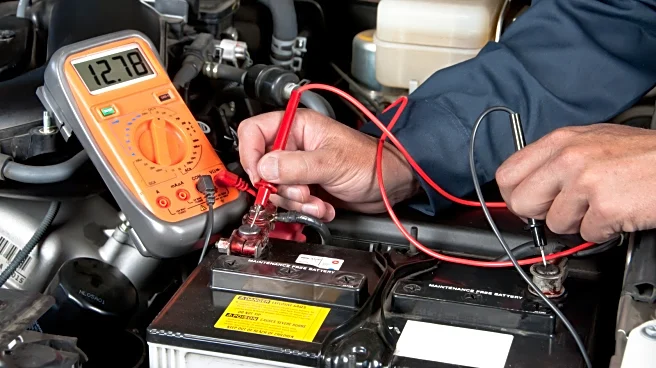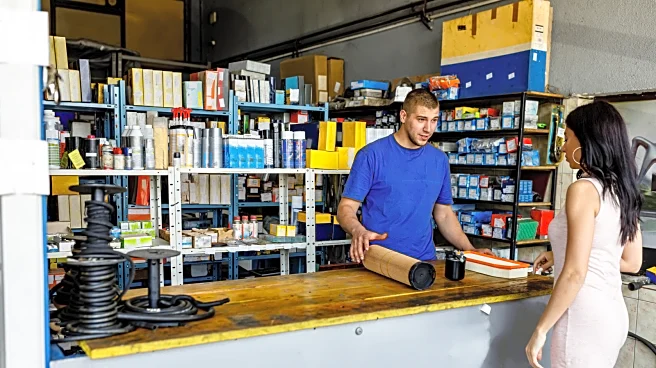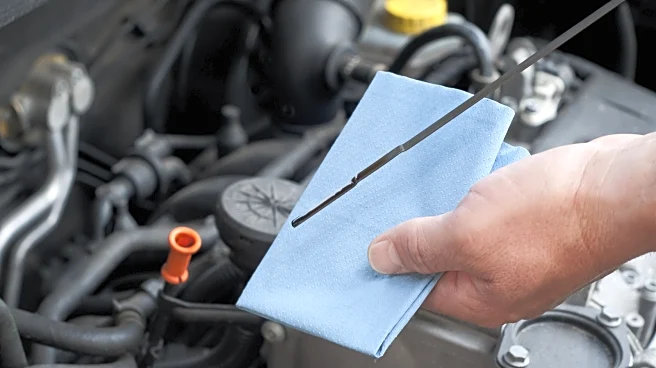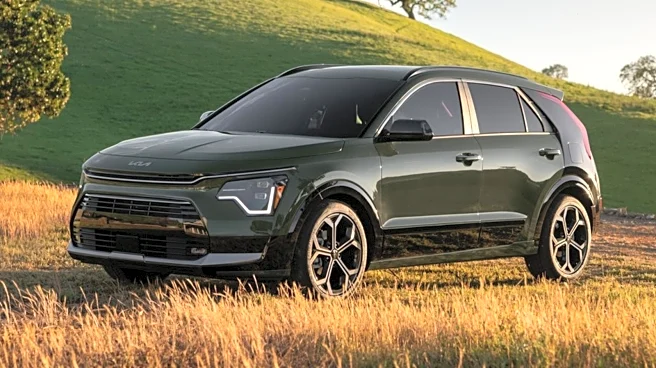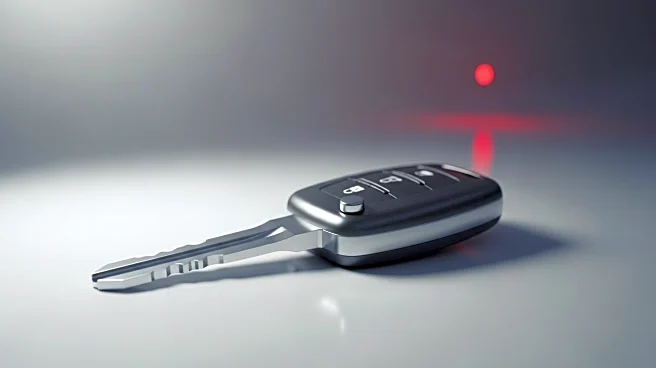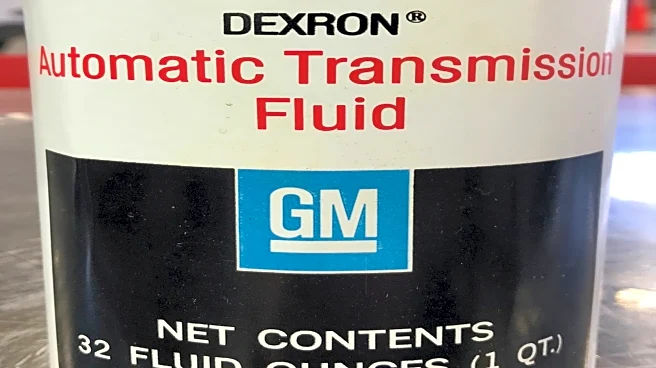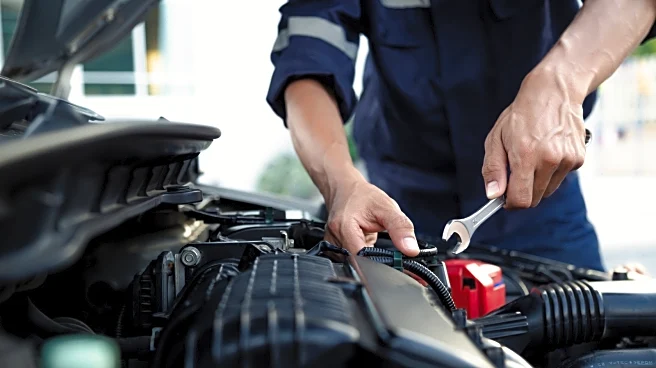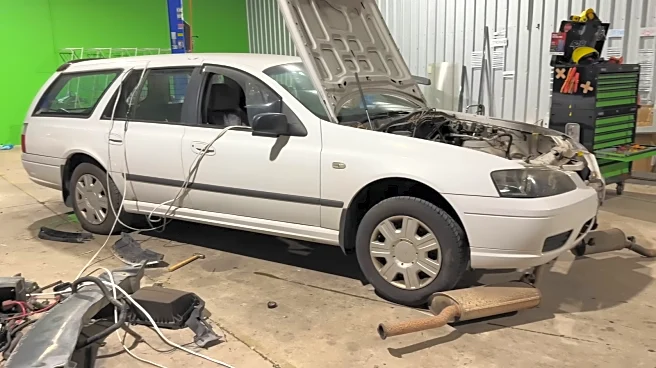
Although internal combustion engines rely on burning fuel and air to run, they do need some help starting up in the first place. In the old days, that could mean standing outside your car and getting the engine's internal parts moving by turning things yourself with a metal crank. The impetus behind developing the first electric starter, fitted to a 1912 Cadillac, came when one of Cadillac founder Henry Leland's friends was killed as a result of an accident that occurred when he was trying to crank-start
a car. Leland turned to Charles Kettering, who developed the auto industry's first electric starter.
The starter now used electricity to first start turning the engine, but it had to get that electricity from somewhere, and that led to the development of the modern car battery. Today, a battery's ability to help get a car engine spinning in cold temperatures is measured in cold cranking amps (CCA). To be exact, cold cranking amps, per Interstate Batteries, reflect how much a battery can give at 0 degrees Fahrenheit for 30 seconds while sustaining a voltage of at least 7.2 volts."
As for how many you need, one cold cranking amp per cubic inch of engine displacement is best. However, this is another one of those cases where your best bet is to follow manufacturer recommendations. In the cold, you don't want to have to be deciding if you need a new battery or just a jump start when it won't work.
Read more: These Are The Longest Lasting All-Season SUV Tires According To Consumer Reports
What's So Important About The Cold?

As mentioned, you need a fair amount of strength to get an engine turning, and it gets noticeably harder in cold weather, when oil becomes thicker and more resistant to flowing around the motor. The colder the weather, the thicker the oil, and the more strength that's required for getting things turning. That's why the benchmark for cold cranking amps is set so low — remember, they're measured at 0 degrees Fahrenheit.
Amperage and voltage come into play as ways to look at the strength of the electric current. If you think about electricity as an actual current of fluid, voltage is like the pressure pushing it forward, and amperage is a measure of how fast it's flowing. That's affected by the cold as well. In the end, it requires around 150% more power to start a car when it's freezing out (32 degrees Fahrenheit) than it does on a nice 80-degree summer day.
The cold can also have an impact on how well the battery itself works. When the temperature drops far enough, it can affect the chemical reactions in the battery that generate electricity. At that point, the battery is not only struggling to turn the engine on, it also has to put in extra effort to warm itself up. So, it needs enough cold cranking amps to make up for that, too.
Can Heat Affect Cold Cranking Amps?

Does hot weather impact car batteries? Extreme heat is actually worse for your battery's performance than extreme cold. There's not a direct connection between cold cranking amps and high temperatures, but the heat speeds up the same chemical reaction that the cold slows down, and that ends up accelerating corrosion, which reduces how much electricity your battery can store and deliver.
Most batteries rely on a special liquid inside that contains the electrolytes needed for the electricity-producing chemical reaction. The thing is, that liquid is highly acidic, and, after enough starting cycles, it can damage the battery by lowering its capacity. Once the capacity gets too small, a "full" battery won't be able to make enough power to deliver all of its cold cranking amps.
All this is behind the constant innovation in the battery industry, like the rise of absorbent glass mat (AGM) technology. They're a lot like they sound, with their electrolytes held in absorbent glass mats that wrap around the battery's lead plates, instead of in some kind of free-flowing liquid. It's a more expensive setup, but one with many advantages over lead batteries, including their noticeably higher CCA ratings. That's why a number of AGM batteries are among the industry's best according to Consumer Reports.
Want more like this? Join the Jalopnik newsletter to get the latest auto news sent straight to your inbox...
Read the original article on Jalopnik.
